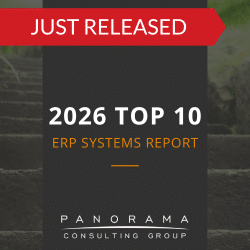Embarking on an ERP implementation is a significant milestone for any organization. While the benefits of ERP systems—such as better data management and streamlined operations—are well-documented, the hidden costs associated with these ERP system implementation projects can be a considerable burden.
Today, we take a peek into the often overlooked expenses and hidden costs of ERP implementations, providing insights to better manage ERP budgets and avoid unforeseen financial pitfalls.
The Breakdown of Real ERP Implementation Costs and Time
Implementing an ERP system involves more than just purchasing software. The total cost of ownership (TCO) for ERP system implementation includes various hidden expenses that are mostly unavoidable.
Software Customization and Integration
Most ERP systems require at least some customization to fit the specific needs of the business. This process can be complex and time-consuming, leading to additional ERP implementation costs. Engaging with vendors for these customizations and integrations often incurs extra charges, as well, particularly if the scope of work extends beyond the standard support package.
A Failed Payroll System Implementation
Panorama’s Expert Witness team was retained to provide a forensic analysis and written report to the court regarding the failed implementation of a major software developer’s ERP/payroll system.
Training and Change Management
Comprehensive training programs are essential for ensuring that employees can effectively use the new system. This training is not a one-time event but an ongoing process that needs to be updated as the system evolves.
Similarly, effective change management strategies are critical to mitigate resistance and ensure smooth transitions.
Costs for training and change management might include hiring an ERP consultant, creating communication plans, and running training sessions.
Data Migration and Cleansing
Migrating data from old systems to the new ERP system is a complex task that requires meticulous planning and execution. This involves mapping data fields, ensuring data integrity, and running extensive testing.
Before migration, it is often necessary to clean the data to remove duplicates, correct inaccuracies, and standardize formats. This process can be labor-intensive and costly.
In addition, organizations may need to invest in data archiving solutions to store historical data that is not migrated to the new system but must be retained for regulatory or business purposes.
System Testing and Validation
ERP systems require extensive testing, including unit testing, system integration testing, and user acceptance testing (UAT). Each phase aims to identify and resolve issues before the system goes live.
For industries with strict regulatory requirements, additional validation processes may be necessary to ensure compliance. These processes add to the overall ERP implementation cost and timeline of the project.
Technology Upgrades and Infrastructure Costs
Organizations opting for cloud-based ERP solutions must consider recurring subscription fees and costs for cloud integration services.
In terms of organizations implementing on-premises solutions, they might have substantial upfront investments in hardware and ongoing maintenance costs.
Regardless of the deployment model, other infrastructure costs may include additional investment in cybersecurity measures, such as firewalls, intrusion detection systems, and regular security audits.
Unforeseen Expenses in ERP Projects
These hidden costs of ERP system implementations are avoidable but often unexpected. Unexpected costs can arise at any stage of an ERP implementation, from initial planning to post-implementation support. Identifying and mitigating risks early can save organizations from budget overruns and project delays.
Scope Creep
As the project progresses, stakeholders may request additional features or changes to the initial requirements. This scope creep can lead to extended timelines and increased costs.
Without strict project management controls, scope creep can derail the project schedule and budget. For example, a food and beverage company might lack project governance that enables them to handle customization requests efficiently. As a result, it might experience significant scope creep, a 25% increase in project costs, and a six-month delay in the go-live date.
Underestimated Resource Requirements
The need for additional staff or external ERP consultants to manage the ERP implementation can be underestimated. This includes project managers, software experts, and change management specialists.
We recently worked with a multinational company that had underestimated the human resources needed for its ERP rollout across multiple locations. This oversight had led to project delays and increased reliance on costly external consultants.
When we got involved, we helped mitigate such issues by providing a realistic assessment of resource needs, ensuring adequate staffing, and offering specialized expertise to manage complex aspects of the implementation.
By involving external consultants earlier, the company could have identified the resource gaps and planned accordingly, thus avoiding delays and additional costs.
Strategic Recommendations for Managing Hidden ERP Costs
1. Conduct a Thorough Needs Analysis
Before selecting an ERP system, we recommend conducting a comprehensive analysis of your business requirements. This helps in choosing a solution that aligns with your specific needs and reduces the need for extensive customization.
We also suggest involving key stakeholders from various departments to ensure all needs are captured and addressed in the initial planning stages.
Throughout this process, independent ERP consultants can provide unbiased advice and help identify potential cost drivers that may not be apparent to internal teams. Experts who have worked alongside computer software expert witnesses in ERP failure cases can be especially helpful. They can offer additional insights based on lessons learned from analyzing these cases.
2. Implement Robust Project Management Practices
Establish a well-defined ERP project scope and stick to it. Any changes should go through a formal change control process to assess the impact on timeline and budget.
Additionally, we recommend using project management tools to track progress, manage resources, and identify any deviations from the plan.
A mid-sized manufacturing company we worked with successfully implemented an ERP system within budget and timeline by employing rigorous project management practices and regular stakeholder reviews.
3. Plan for Comprehensive Training and Change Management
Create a training plan that covers all aspects of the ERP system and is tailored to different user groups. This ensures users are comfortable with the system before it goes live.
In addition, be sure to allocate sufficient budget and resources for change management initiatives to address resistance and ensure smooth adoption.
4. Budget for Contingencies
Set aside a contingency fund to cover unexpected expenses. This helps in managing any unforeseen costs without derailing the entire project.
Also, periodically review the project budget and adjust the contingency fund as needed based on project progress and any new risks identified.
Unhiding Costs for Successful ERP System Implementations
ERP implementations are complex and multifaceted projects that require careful planning and execution. By understanding and anticipating hidden costs of implementing an ERP system, organizations can better manage their budgets and avoid financial surprises.
A business software consultant, like Panorama, can help your organization successfully navigate the challenges of ERP implementations and achieve your desired business outcomes. Contact us below to learn more.





![The Hidden Costs of ERP System Implementations [Breakdown]](https://www.panorama-consulting.com/wp-content/uploads/2024/07/Hidden-Costs-of-ERP-Implementations.png)









